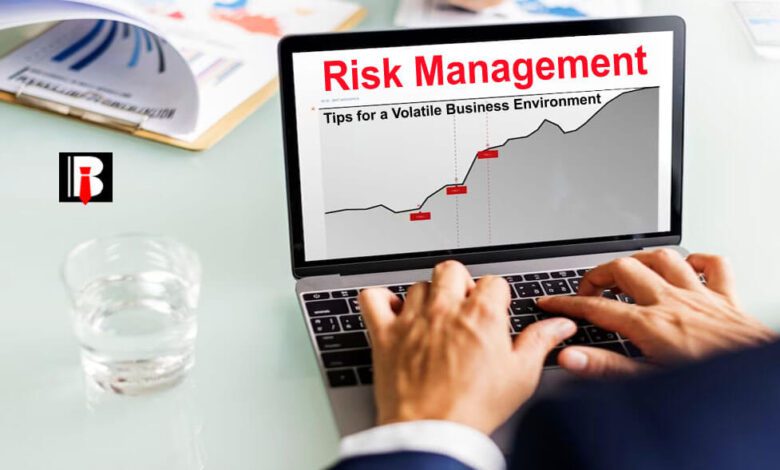Risk Management Tips for a Volatile Business Environment

The importance of risk management in today’s fast-paced business world cannot be emphasized. Rapid changes in technology, economics, politics, and other global elements have created an atmosphere of uncertainty in today’s corporate world. In the present business landscape, enterprises that actively participate in verifying, evaluating, and reducing possible risks to their operational processes are more likely to succeed. Continue reading as we examine the vital components of risk management that might guarantee a corporation’s sustained financial prosperity against economic unpredictability.
Quick Shortcut Headlines
Tips for Risk Management:
1. Comprehensive Risk Assessment:
- Risks associated with your industry, market, and business operations should be evaluated and prioritized on a regular basis.
- Think about the dangers that come from within as well as those that come from beyond, such as operational, financial, and compliance issues.
- Rank dangers by how often they are to occur and how much damage they could do.
2. Customize Your Approach:
- Methods of risk management should be tailored to your company’s circumstances, capacity for risk, and objectives.
- Risk management is not a silver bullet, and different strategies may be required for various types of danger.
3. Stay Informed:
- Always be aware of changes in the law, industry standards, and potential threats.
- Get involved with professional groups and talk to people in your field to learn what works best.
4. Create a Risk Management Team:

- Establish a dedicated team or designate individuals responsible for overseeing risk management efforts.
- Ensure clear communication and collaboration across departments and levels of the organization.
5. Document Policies and Procedures:
- Create risk management guidelines that are easy to understand and follow.
- Changes in the business climate necessitate frequent reviews and revisions of these records.
6. Risk Mitigation Plans:
- For identified high-impact risks, create detailed mitigation plans outlining actions to reduce the likelihood and impact of those risks.
- Include contingency plans to respond effectively if risks materialize.
7. Employee Training and Awareness:
- Educate employees at all levels about the importance of risk management.
- Encourage a culture of risk awareness, where employees understand their roles in identifying and reporting risks.
8. Monitor and Review:
- Continuously monitor risk factors and key performance indicators to detect changes and emerging threats.
- Conduct periodic risk assessments to ensure your strategies remain relevant.
9. Insurance Coverage:
- Review and optimize your insurance coverage regularly to ensure it aligns with your evolving risk profile.
- Work closely with your insurance broker to understand your policy terms and options.
10. Crisis Management Plan:
- Develop a crisis management plan that outlines how the organization will respond to major unexpected events.
- Test the plan through simulations or drills to ensure readiness.
Risk Management strategies:

Avoidance:
Navigating a volatile business environment requires a proactive approach to risk management. Start by conducting a comprehensive risk assessment, identifying potential threats and their impacts. Develop a robust risk management strategy that includes mitigation plans for each identified risk. Diversify your investments and revenue streams to reduce dependency on a single source. Stay informed about industry trends, regulatory changes, and economic shifts to anticipate risks. Foster a culture of risk awareness and encourage employees to report potential issues. Regularly review and update your risk management strategy to adapt to changing circumstances. Effective risk management is key to ensuring business resilience and longevity in uncertain times.
Retention:
Retaining risk management in a volatile business environment is imperative. Firstly, regularly assess and update your strategies to align with changing market dynamics. Diversify your investments to mitigate single-point failures and reduce exposure to a single risk. Maintain a robust emergency response plan, ensuring your team is well-prepared for unforeseen challenges.
Moreover, fosters a culture of risk-awareness within the organization, encouraging employees at all levels to identify and report potential risks. Lastly, stay informed about industry trends and regulations to adapt quickly and proactively address emerging risks. Effective risk management is an ongoing process essential for business resilience in turbulent times.
Spreading:
Risk diversification, or “spreading,” is a method used to lessen the blow of unexpected events. Diversifying involves dividing up investments, operations, or activities among multiple markets to lessen the impact of any one failure. Gains in one area might offset losses in another, boosting resilience and adaptability.
Loss Prevention and Reduction:
In a volatile business environment, effective loss prevention and reduction through robust risk management strategies are paramount. Start by conducting a comprehensive risk assessment to identify potential threats. Implement stringent security measures to protect assets and sensitive data, and regularly update them. Diversifying investments and income streams can help mitigate financial losses during downturns.
Create a crisis response plan, ensuring employees are well-trained and informed. Regularly review insurance coverage to align it with current risks. Cultivate a culture of risk awareness among employees, encouraging reporting of potential issues promptly. Staying agile and proactive in risk management is key to surviving and thriving in turbulent times.
Transfer (through Insurance and Contracts):
Risk transfer, often known as transferring the financial weight of prospective losses to third parties through the use of insurance and contracts, is the practice of doing so. Insurance policies and legal agreements can help with this. In exchange for premiums, insurers will protect firms from a variety of potential losses. Through the use of contracts, parties can shift risks by allocating responsibilities and liabilities to others. Both strategies can help keep your money safe and reduce potential losses.
Conclusion:
In today’s uncertain economic atmosphere, risk management is not a nice to have; it’s a need. Organizations may successfully navigate uncertainty and obstacles by implementing the following essential risk management techniques: avoidance, retention, spreading, loss prevention and reduction, and transfer. Even in the face of extreme uncertainty, a firm may better safeguard its assets, secure its continued operation, and grab growth possibilities with a well-rounded risk management strategy. Keep in mind that your organization’s specific situation and goals will determine which mix of these tactics will work best for managing risk.
